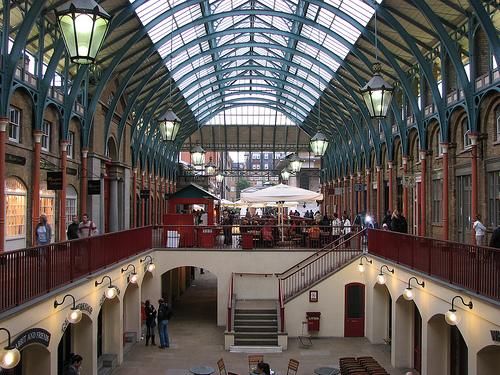
(covent01.jpg)

Subj:What a dangerous method!
That surely made me think it over.
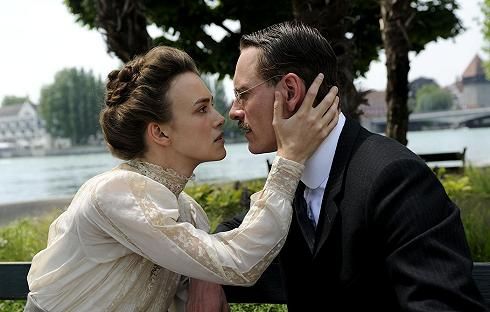
(danger06.jpg)
From: diane@vancouver.ca
To: barclay1720@aol.com
Date: Fri, Feb 10, 2012 5:49 pm.
Pacific Standard Time
Hi Kato,
My truly romance-loving Taliesin,
Thanks so much for all of this.
I'm going to save it so I can savor it all carefully when time allows.
I'm especially grateful for the summary of how "The Piano" ended.
I suppose Alistair finally came to the sad conclusion that Ada would not ever love him like she loved (or was attracted to) Baines and possibly he felt badly for inflicting such a permanent injury.
I think if he had made a bit more effort from the start and displayed some affection towards Ada, the outcome may have been quite different.
Truly, he would have been a better match for her, I think; rather than her ending up with an illiterate tatooed native fellow.
Ah, but attraction? ... who knows?!
Thanks again, though; I did want to know how it all wrapped up.
A Dangerous Method
2011 Official Trailer
Back to the Dangerous Method, I think the situation with her father would not necessarily be one of love (doubtful, really) or true hate, but somewhere in between.
Because she felt turned on the time he beat her, in her mind the association was formed between violence and sex---an association that, even though she was an intelligent woman, seemed to persist.
Perhaps she rose about it eventually, and it did seem she married a rather straight fellow eventually and was at least marginally happy.
Such interesting creatures we are, true?
A Dangerous Method
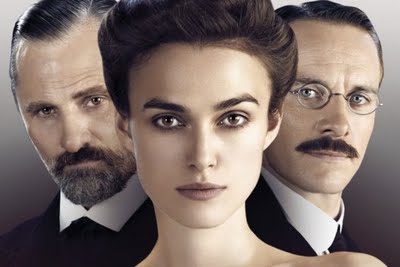
(danger03.jpg)
A Dangerous Method is a 2011 historical film directed by David Cronenberg and starring Viggo Mortensen, Michael Fassbender, Keira Knightley and Vincent Cassel.
The screenplay was adapted by Academy Award-winning writer Christopher Hampton from his 2002 stage play The Talking Cure, which was based on the 1993 non-fiction book by John Kerr, A Most Dangerous Method: the story of Jung, Freud, and Sabina Spielrein.
The film marks the third consecutive and overall collaboration between Cronenberg and Viggo Mortensen (after A History of Violence and Eastern Promises).
This is also the third Cronenberg film made with British film producer Jeremy Thomas, after completing together the William Burroughs adaptation Naked Lunch and the J.G. Ballard adaptation Crash.
A Dangerous Method was a German/Canadian co-production.
The film premiered at The 68th Venice Film Festival and was also featured at the 2011 Toronto International Film Festival.
Plot
Set on the eve of World War I, A Dangerous Method is based on the turbulent relationships between Carl Jung, founder of analytical psychology, Sigmund Freud, founder of the discipline of psychoanalysis, and Sabina Spielrein, initially a patient of Jung and later a physician and one of the first female psychoanalysts.
SOURCE: "A Dangerous Method"
Wikipedia, the free encyclopedia
I think Jung was happy with his marriage as well; both Jung and Sabina had a close working association, both were exploring the mind and its workings, so they had a lot in common to start; the affair, the sex, the violence was an exciting secret and additional turnon for both of them, but not truly necessary for their longterm happiness.
That's just my take on it.
Perhaps I'm out in left-field.

(hara112.jpg)
■"Electra Complex"
(February 10, 2012)
Wow! Thanks again for all this,
I'm looking forward to reviewing the entire message later,
Have a good weekend, kiddo,
I'm going to a Homelessness Workshop tomorrow at Christ Church Cathedral with Judy Graves, the city's "voice" for the homeless in Vancouver, a woman who has sacrificed her life, really, for those in need.

As part of the Cathedral's soup kitchen team, they wanted to give us a greater insight into the situation and look at possible solutions or at least ways to further help the needy.
Love, Diane ~

Love, Diane ~

Subj:Hi, Diane
Have a great time
in London!

(diane25.jpg)
Date: Sun., Feb. 26, 2012 4:11 PM
Pacific Standard Time
From: barclay1720@aol.com
To: diane3760@canada.ca
Hello, Diane,
I'm so glad to know that you'll visit London.
I was over there about 15 years ago.
I wish I could go there with you again.
some day... some day... ha, ha, ha, ha, ha ...
I've been reading many books regarding "Madame Butterfly" since I received your last mail about "A Dangerous Method."
I was too busy reading those books to write my articles in English.
How come Sabina went through kinky sex life?
I read a book titled "Butterfly" written by Paul Loewen.
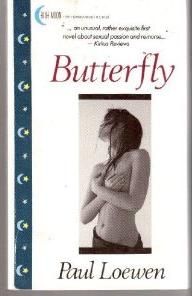
(butterfly2.jpg)
According to the author, Paul Loewen lived in Heidelberg during the World War II.
One day, while listening to a record of the opera "Madama Butterfly," his mother became upset unusually.
When she calmed down eventually, she revealed the secrets of her upbringing.
A Japanese women who became a model of Madama Butterfly had, in fact, a daughter, not a son.
The girl would later married a German doctor who had been a consultant at a hospital in Tokyo.
Four years later she gave birth to a baby boy.
That woman is his mother and the boy is the author---Paul Loewen.

(maiko17.jpg)
That's what the preface says.
When Loewen learned that the daughter of the so-called Madame Butterfly was his mother, he had a strong interest in the true story of his grandparents.
After the World War II, he had the opportunity to visit Japan in the United-Nations-related work.
In Nagasaki, he discovered the memoirs and letters of the late Pinkerton.
Because the contents of the notes and letters were decadent and sexual, they were not published at the time.
However, in the wake of the death of his mother in 1976, he decided to publish by editing the materials discovered in Nagasaki as well as the diary of Sharpless obtained in the United States in order to reveal the true story of his grandparents.

In the past years, many researchers have tried to find the model of Madame Butterfly of the opera.
Did the model ever exist?
If so, who was she?
This mystery has not been clearly elucidated until now.
Although the discovered materials are certainly suspicious and indeed lacking in credibility, Loewen's literary Work-up seems quite effective in the sense that the reader really looks forward to the mystery and wants to solve it.

The story begins when Kate (Kathryn Hamilton) and Henry Pinkerton were still young lovers.
Kate is a woman who combines the elegance of demeanor equipped with extraordinary intelligence and breathtaking beauty as well as delicate sensibility.
I've found several common traits between Kate and Sabina.
That's why I've been reading the related books in order to get insights into Kate's as well as Sabina's mind.
Well...so much so that I'll write an article about it, and hope you'll enjoy reading it.
I'll send another mail to you while you're enjoying your journey in London so that you will be able to read as a bit of refresher.
In any case, please have a great time in London, learn as much as possible, and experience a great deal of adventure and romance. :)
I'm looking foward to hearing fascinating and inspirational stories from you.
Your truly travel-loving Taliesin,
Kato

:) with love

How long are you gonna stay in London?

A little bit shorter than two weeks.
Well...better than a couple of days.
I wish I could stay over there for a whole month.
Why not?
This time I'm not alone.
Oh...? With your boyfriend?
Oh no. A group of seven.
I wonder if the group has something to do with the Cathedral's soup kitchen...and, you guys are gonna help homeless people in London.
Don't be silly, Kato...not like that. We'll enjoy sightseeing and learn cultural differences...something like that.
I see. In any case I hope you'll have a great time in London.
Thank you, Kato. Why don't you join us?
Oh no, I can't. I'd rather stay in Vancouver. As I said, I wanna hear fascinating and inspirational stories from you. I'm pretty sure you'll have some adventures and romances over there. Will you not?
Don't be silly, Kato. I won't disturb other people in my group.
You don't have to disturb other people. What I'm saying is that the whole group should be able to have some adventures and romances in London.
Like what?
Like...ah...streaking in front of the Parliament.

(diane25.jpg)

Don't be foolish, Kato. I'm a Christian. I shouldn't be running naked in any public place.

I thought you were open-minded.
Be serious, Kato. Streaking has nothing to do with open-mindedness. I think I should behave like a decent Canadian.
Good for you, Diane.
By the way, Kato, you mentioned that you went over to England 15 years ago.
Yes, I did.
What part of London do you recommend me to see?
Covent Garden.
Covent Garden

(covent01.jpg)
It is a district in London on the eastern fringes of the West End, between St. Martin's Lane and Drury Lane.
It is associated with the former fruit and vegetable market in the central square, now a popular shopping and tourist site, and the Royal Opera House, which is also known as "Covent Garden".
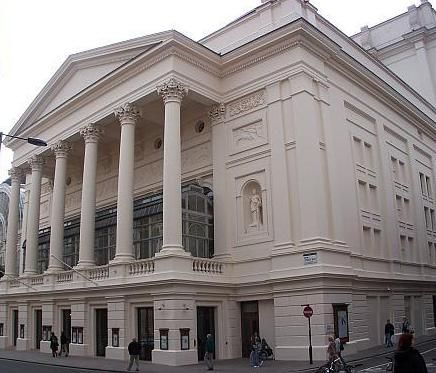
(covent06.jpg)
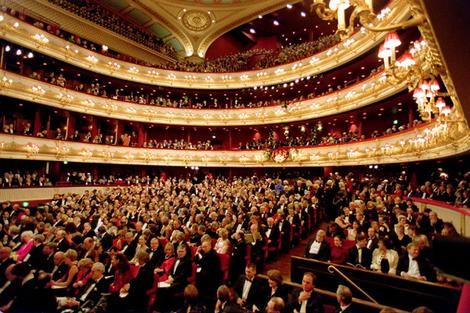
(covent05.jpg)
Lighting Design Madama Butterfly
At Royal Opera House
The district is divided by the main thoroughfare of Long Acre, north of which is given over to independent shops centred on Neal's Yard and Seven Dials, while the south contains the central square with its street performers and most of the elegant buildings, theatres and entertainment facilities, including the Theatre Royal, Drury Lane, and the London Transport Museum.
Though mainly fields until the 16th century, the area was briefly settled when it became the heart of the Anglo-Saxon trading town of Lundenwic.
After the town was abandoned, part of the area was walled off by 1200 for use as arable land and orchards by Westminster Abbey, and was referred to as "the garden of the Abbey and Convent".
The land, now called "the Covent Garden", was seized by Henry VIII, and granted to the Earls of Bedford in 1552.
The 4th Earl commissioned Inigo Jones to build some fine houses to attract wealthy tenants. Jones designed the Italianate arcaded square along with the church of St Paul's.
The design of the square was new to London, and had a significant influence on modern town planning, acting as the prototype for the laying-out of new estates as London grew.
A small open-air fruit and vegetable market had developed on the south side of the fashionable square by 1654.
Gradually, both the market and the surrounding area fell into disrepute, as taverns, theatres, coffee-houses and brothels opened up; the gentry moved away, and rakes, wits and playwrights moved in.
By the 18th century it had become a well-known red-light district, attracting notable prostitutes.
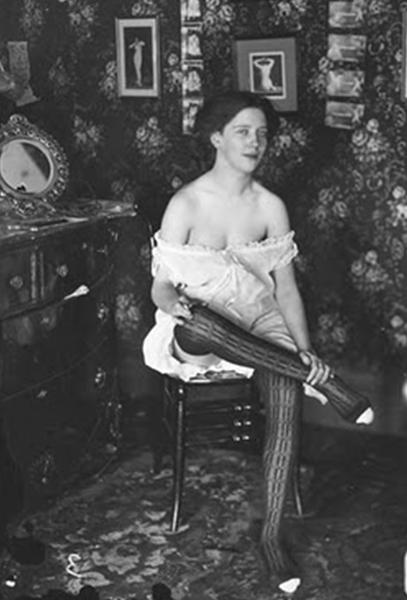
(covent04.jpg)
An Act of Parliament was drawn up to control the area, and Charles Fowler's neo-classical building was erected in 1830 to cover and help organise the market.
The area declined as a pleasure-ground as the market grew and further buildings were added: the Floral Hall, Charter Market, and in 1904 the Jubilee Market.
By the end of the 1960s traffic congestion was causing problems, and in 1974 the market relocated to the New Covent Garden Market about three miles (5 km) south-west at Nine Elms.
The central building re-opened as a shopping centre in 1980, and is now a tourist location containing cafes, pubs, small shops, and a craft market called the Apple Market, along with another market held in the Jubilee Hall.
Covent Garden, with the postcode WC2, falls within the London boroughs of Westminster and Camden, and the parliamentary constituencies of Cities of London and Westminster and Holborn and St Pancras.
The area has been served by the Piccadilly line at Covent Garden tube station since 1907; the journey from Leicester Square, at 300 yards, is the shortest in London.

Covent Garden at night
SOURCE: "Covent Garden"
Wikipedia, the free encyclopedia

How come you recommend this part of London?

Well... you see, it was once a well-known red-light district, attracting notable prostitutes.
Don't be silly, Kato. Why should I visit the once notorious red-light district?
I don't mean, you should streak on the street of Covent Garden.
Kato!...tsk, tsk, tsk ... you, naughty brat!...you're preoccupied with streaking, aren't you? Do you really want me to run naked in London?
Oh no ... Londoners would be more than happy to see you run naked, but the reason I recommend Covent Garden is Royal Opera House.
Why is that?
You see... As I wrote in the mail, I've been reading many books regarding "Madame Butterfly" since I received your last mail about "A Dangerous Method."
So what?
Well..."Madame Butterfly" is an opera created by Giacomo Puccini.
Puccini was an Italian composer, wasn't he?
Yes, he was.
How come you brought up Royal Opera House and Puccini together?
A good question ... Puccini had a romance with Sybil Seligman at Royal Opera House.

Sybil Seligman
Who is Sybil Seligman?
Puccini met her on his business trip to London. One of his friends introduced her to the composer, who at once liked her because she was beautiful and full of inspiration.
Was she married?
Yes, she was. Puccini could convince his wife that his friendship to Sybil was of a purely intellectual nature.
Did his wife believe it?
Well... yes and no. His wife, Elvira, was suffering from an inferiority complex for not being educated or interested in matters of art. Although she didn't believe it 100%, Elvira had no other option. So she accepted Sybil as Puccini's artistic counsel and confidant because Elvira herself was never able to be.
I see. That's how their romance started, isn't it?
That's right. Sybil was Puccini's friend, confidant and lover for more than 20 years, suggested topics and translated dramas and literature for Puccini who barely spoke an English word. Sibyl translated Oscar Wilde's "A Florentine Tragedy" for the composer, who nearly turned it into a first third of the planned trittico but then decided otherwise. Later, Alexander v. Zemlinsky adapted it and turned it into "the Florentine Tragedy."
What is the romance you're talking about, Kato?
Well... Puccini and Sybil got out to the theatre at Covent Garden every night.
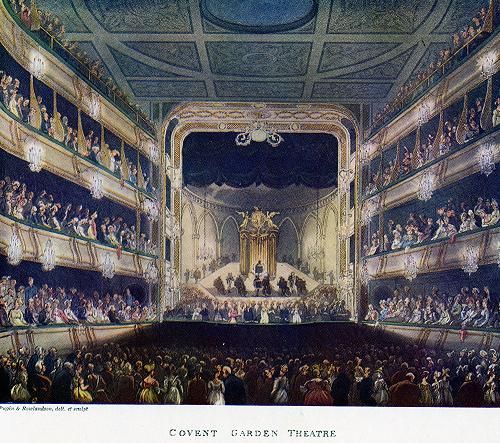
(covent03.jpg)

David, Sybil's husband and businessman, didn't like music, and didn't like Puccini at all, but he pretended to like him while her husband had allegedly countless affairs. Sybil didn't care because she enjoyed seeing operas with Puccini. Later she told her friends that those night-outs with Puccini were the happiest years of her life.

How about Puccini?
Of course, he never forget those inspirational evenings.
How come you're so sure sbout it, Kato?
'Cause one of those nights, Puccini saw with Sybil "Madame Butterfly"---a play dramatized by David Belasco. Puccini loved it and decided to turn it into his opera.
【Himiko's Monologue】

"Madame Butterfly" is an opera in three acts (originally two acts) by Giacomo Puccini, with an Italian libretto by Luigi Illica and Giuseppe Giacosa.

Puccini based his opera in part on the short story "Madame Butterfly" (1898) by John Luther Long, which was dramatized by David Belasco.
Puccini also based it on the novel Madame Chrysanthème (1887) by Pierre Loti.
According to one scholar, the opera was based on events that actually occurred in Nagasaki in the early 1890s.
The original version of the opera, in two acts, had its premiere on February 17, 1904, at La Scala in Milan.
It was very poorly received despite the presence of such notable singers as soprano Rosina Storchio, tenor Giovanni Zenatello and baritone Giuseppe De Luca in the lead roles.
This was due in large part to the late completion and inadequate time for rehearsals.
Puccini revised the opera, splitting the second act into two acts and making other changes.
On May 28, 1904, this version was performed in Brescia and was a huge success.
Between 1915 and 1920, Japan's best-known opera singer Tamaki Miura won international fame for her performances as Cio-Cio San.
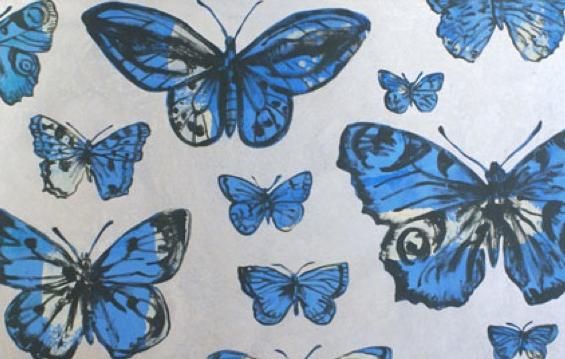
(butterfly3.jpg)
Her statue, along with that of Puccini, can be found in the Glover Garden in Nagasaki, the city where the opera is set.
In any case, I'd like to meet my "Romeo"---a decent man in my future life.
How come I'm always a loner?
I wish I could meet a nice gentleman at the library in my town as Diane met Kato.
Well, they say, there is a way where there is a will.
I hope Kato will write another interesting article.
So please come back to see me.
Have a nice day!
Bye bye ...


If you've got some time,
Please read one of the following artciles:

■"Hello Diane!"
■"I wish you were there!"
■"Jane Eyre"

■"Jane Eyre Again"
■"Jane Eyre in Vancouver"
■"Jane Eyre Special"
■"Love & Death of Cleopatra"
■"Nice Story"

■"Scrumdiddlyumptious"
■"Spiritual Work or What?"
■"What a coincidence!"

■"Wind and Water"
■"Yoga and Happiness"
■"You're in a good shape"

■"Hellelujah!"
■"Ecclesiophobia"
■"Uncorruptible"
■"Net Travel & Jane"

■"Net Love"
■"Complicated Love"
■"Electra Complex"
■"Net Début"
■"Inner World"

■"Madame Riviera and Burger"
■"Roly-poly in the North"
■"Amazing Grace"
■"Diane in Paris"
■"Diane in Montmartre"

■"Diane Well Read"
■"Wantirna South"
■"Maiden's Prayer"
■"Bandwidth"
■"Squaw House and Melbourne Hotel"

■"Tulips and Diane"
■"Diane in Bustle Skirt"
■"Diane and Beauty"
■"Lady Chatterley and Beauty"
■"Victorian Prudery"

■"Diane Chatterley"
■"From Canada to Japan"
■"From Gyoda to Vancouver"
■"Film Festival"
■"Madame Taliesin"
■"Happy Days"
■"Vancouver Again"
■"Swansea"

■"Midnight in Vancouver"
■"Madame Lindbergh"
■"Dead Poets Society"
■"Letters to Diane"
■"Taliesin Studio"

■"Wright and Japan"
■"Taliesin Banzai"
■"Memrory Lane to Sendai"
■"Aunt Sleepie"
■"Titanic @ Sendai"
■"Birdcage"
■"Roly-poly in the wild"
■"Silence is dull"
■"Zen and Chi Gong"
■"Piano Lesson"
■"Dangerous Relation"
■"Electra Complex"


Hi, I'm June Adames.
The Royal Opera House, often referred to as simply "Covent Garden", was constructed as the "Theatre Royal" in 1732 to a design by Edward Shepherd.
During the first hundred years or so of its history, the theatre was primarily a playhouse, with the Letters Patent granted by Charles II giving Covent Garden and Theatre Royal, Drury Lane exclusive rights to present spoken drama in London.
In 1734, the first ballet was presented.
A year later Handel's first season of operas began.
Many of his operas and oratorios were specifically written for Covent Garden and had their premières here.
It has been the home of The Royal Opera since 1945, and the Royal Ballet since 1946.
The current building is the third theatre on the site following destructive fires in 1808 and 1857.
The façade, foyer and auditorium were designed by Edward Barry, and date from 1858, but almost every other element of the present complex dates from an extensive £178 million reconstruction in the 1990s.


The Royal Opera House seats 2,268 people and consists of four tiers of boxes and balconies and the amphitheatre gallery.
When you have a chance to stay in London, why don't you visit the opera house?
You may see some celebs in one of the boxes.

ところで、愛とロマンに満ちた
レンゲさんのお話をまとめて
『レンゲ物語』を作りました。
もし、レンゲさんの記事をまとめて読みたいならば、
次のリンクをクリックしてくださいね。
■『愛とロマンのレンゲ物語』

■『軽井沢タリアセン夫人 - 小百合物語』
とにかく、今日も一日楽しく愉快に
ネットサーフィンしましょうね。
じゃあね。







0 件のコメント:
コメントを投稿